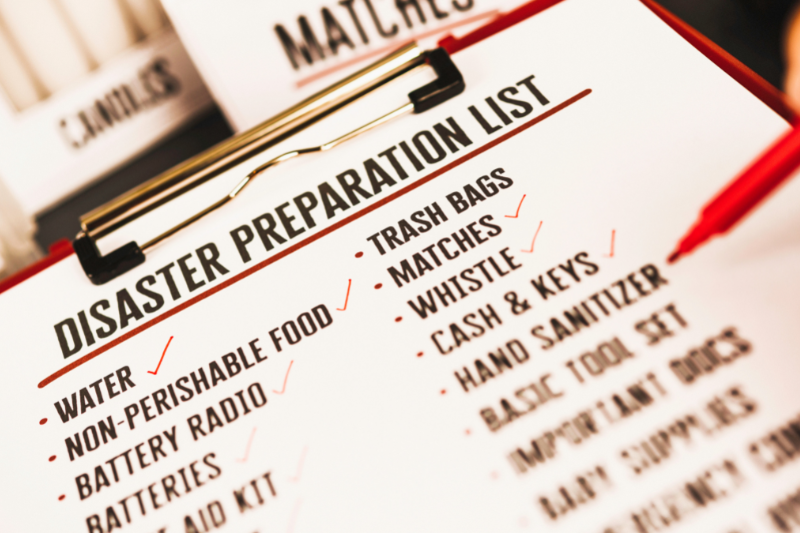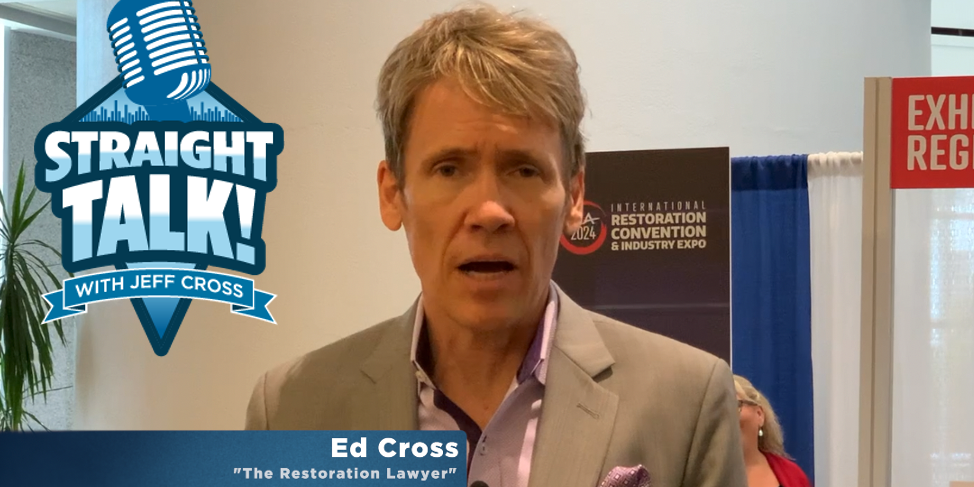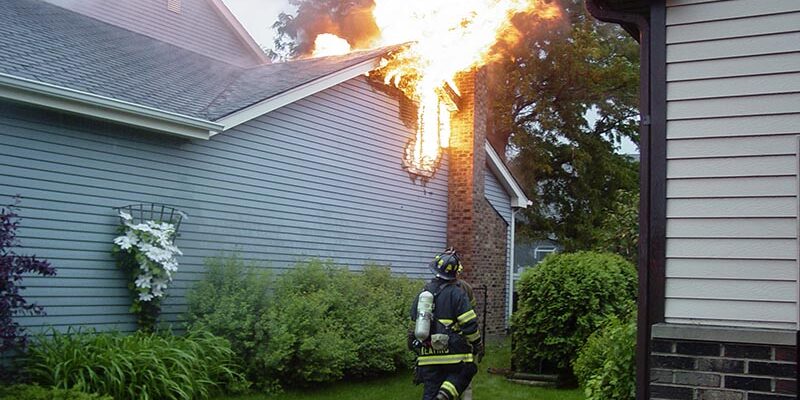Teaching Your Clients How to Reduce Disaster Risks

As a disaster restoration professional, you are often at the forefront of conversations and processes during people’s most devastating moments. And, while it may fuel your company and your profits, reducing these disastrous moments by helping your clients to prepare for them can lead to profit increases and retention stats that far surpass your expectations.
To show exactly how these initiatives can help you connect with your clients and use compassion to benefit your brand, let’s first take a look at some of the negative effects of being unprepared before a disaster that your clients are likely to face without your assistance.
The negative effects of being unprepared before disasters
Despite the devastating losses of Hurricane Ian and the many other floods, hurricanes, and tornados before it, only 22% of Americans have flood insurance. As FEMA reports, “The public has continued building a strong intention to prepare for disasters, yet there remains a critical need to turn it into action, which has only increased by 2% since 2013.”
Just last year, Wells Fargo discovered another set of statistics that were unsettling when placed together:
- Four in five Americans (84%) live in areas that have experienced some form of natural disaster in the past three years
- Over half (54%) live in areas that have experienced severe natural disasters, specifically hurricanes, tornadoes, floods, wildfires, or earthquakes
- Nearly three-quarters of respondents (72%) say they or their families have been directly affected by natural disasters at some point in their lifetime
- Most Americans (71%) admit they don’t have a detailed emergency plan in the event of a natural disaster
When the surveyed individuals were asked about their planning processes, it was found that 40% described themselves as a ‘barely covered planner’ who has very thin and non-specific emergency plans while only 5% described themselves as fully prepared.
Although not every American is bound to face a natural disaster in their city or state, knowing the effects of being unprepared may help incentivize your clients to prepare even in the most unlikely of scenarios ahead of time.
For instance, the national disaster restoration job average comes out to $3500 but could easily be in the tens of thousands range if there is no preparation being done ahead of time. While this seems like a cash cow to the average restoration company leader, the ability to save your clients money as well as precious possessions and even family members’ lives is enough for these individuals to give your company far more than one singular upfront payment without any additional benefits attached.
With this being said, let’s analyze how money isn’t the only thing restoration companies should focus on, and how assisting with disaster preparedness can give company leaders and their brands a level of value that transcends solely profits moving forward.
The benefits of preparing your customers before disaster strikes
As a business owner or leader, it’s easy to get engulfed in the data associated with profits and lose sight of the many other benefits that you can acquire through strategies and networking. Some of these include social media growth, positive reviews, and a positive brand image and customer retention rate.
-
Boosting brand image
One of the first reasons to offer disaster preparedness guides and resources to your clients is the immediate boost it will give your brand image locally. When customers see a business owner putting people over profits, they are far more likely to work with them and sympathize with their brand.
As a study by Havas Group shows, 77% of consumers buy from brands that share the same values as they do. With this being said, showing that you align with your customers and care about them in their times of need is a great way to benefit your brand image and increase your audience base as a result.
-
Expanding customer base and interactions
Another benefit to offering disaster risk reduction resources is that this can help increase your customer base and interactions with customers as well. When customers see you taking time to help them even when it may lose you money, they are far more likely to interact with your brand online and in person. On top of this, your interactions with future clients can then begin long before disaster strikes. This means you can build customer trust and loyalty even before a job is done by your team.
-
Intelligent marketing methods
One of the main value propositions to informing your prospects and clients of how to be prepared is better marketing. As Tom Fishburne once said, “The best marketing doesn’t feel like marketing.”
This concept is particularly viable when it comes to marketing your brand through disaster risk reduction recommendations because it is one of the best ways to not directly promote your brand yet still have your services, experience, and brand image all positively affected.
On top of this, a self-made disaster preparedness checklist or guide can actually be used as an incentive proposition for multiple marketing campaigns likewise. One example of this can be seen when a company offers a free guide or eBook in exchange for your email account. Another version of this can be seen when companies ask you to schedule a consultation with their team in exchange for a guide or other valuable item. Either way, this method is a great way to get more traction for your brand all while delivering disaster preparedness resources that are actually self-branded and serve as promotional materials as well.
-
Social media audience growth
In the same sense as marketing, using these resources to your benefit can also help your social media strategies as well. By sharing these free resources with your audience on various social accounts, you can encourage them to share them around, save them, interact with your brand on the posts, and even go to your website to download particular resources you’ve made yourself.
Since social media video content is huge right now for audience growth, you may also want to consider making video versions of your resources and guides as well to share online. You can even share this highly informative video by PBS to get started:
-
Ensuring positive client reviews
When it comes to online reviews, getting customers to give them during some of the most heartwrenching moments of their lives is hardly a simple task. However, you may be able to garner positive reviews for your brand solely based on the compassion you show when sharing resources online instead.
According to Trustpilot, “Research shows that consumers are more inclined to write reviews when the experience they’ve had strikes an emotional chord.” By being compassionate and helpful to those in need, you can strike that chord and gain more reviews than ever before as a result. In fact, you may even be able to get positive reviews simply from community members whether they’ve worked with you or not.
-
Increased ROI and customer loyalty
Lastly, since profits are still a major part of a successful business model, it may benefit you to know that this strategy can also help increase your return on investment and customer loyalty and retention rates likewise.
These things are truly invaluable to a brand and show exactly why risking a small amount of money upfront may actually help your brand long-term instead. With loyal customers recommending your brand regularly and customers working with you in your area far more often due to hearing and seeing great things, you can make far more than a simple job’s worth and do so with very little effort or preparation on your end.
Disaster preparedness resources to help reduce disaster risks
There are plenty of disaster preparedness resources already available that won’t require you to develop your own. However, as stated above, making your own for incentives campaigns may be a good idea. But, to get started and begin to see the positive results of recommending resources to your current and potential clients, try using some of the ones listed below which we’ve compiled just for you and your brand:
- Disaster Preparedness and Recovery Quick Guides
- FEMA App
- Family Communication Plan
- Emergency Supply Kit Guide
- The Red Guide to Recovery
- Emergency Preparedness Checklist
- Disaster Preparedness Gadgets
- Emergency Apps
By sharing even a few of these with your audience online as well as your past and current clients, you can show just how much you care about their well-being and how much you want them to keep safe during emergencies.
Even though it may seem counterproductive at first to encourage someone to mitigate damage that makes you money, perhaps, with this guide you can now see how there is still immense value beyond profits that a decision like this can help you attain.












